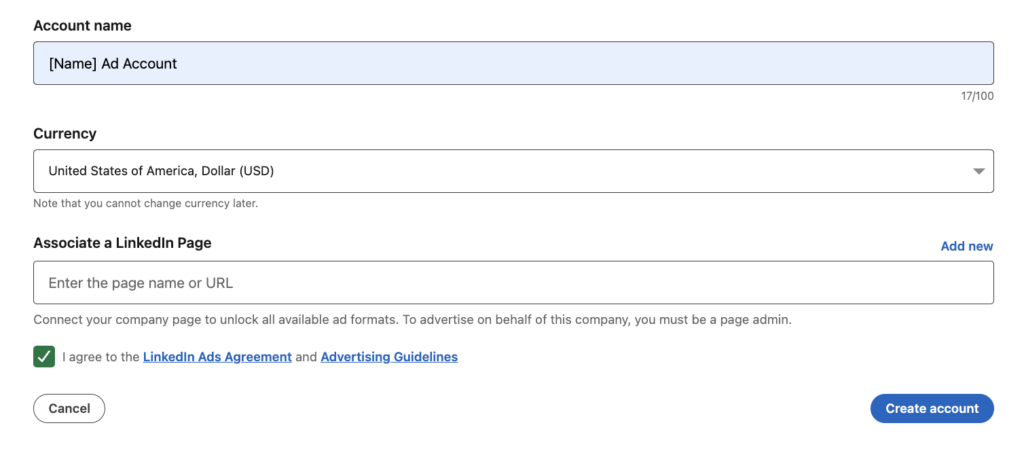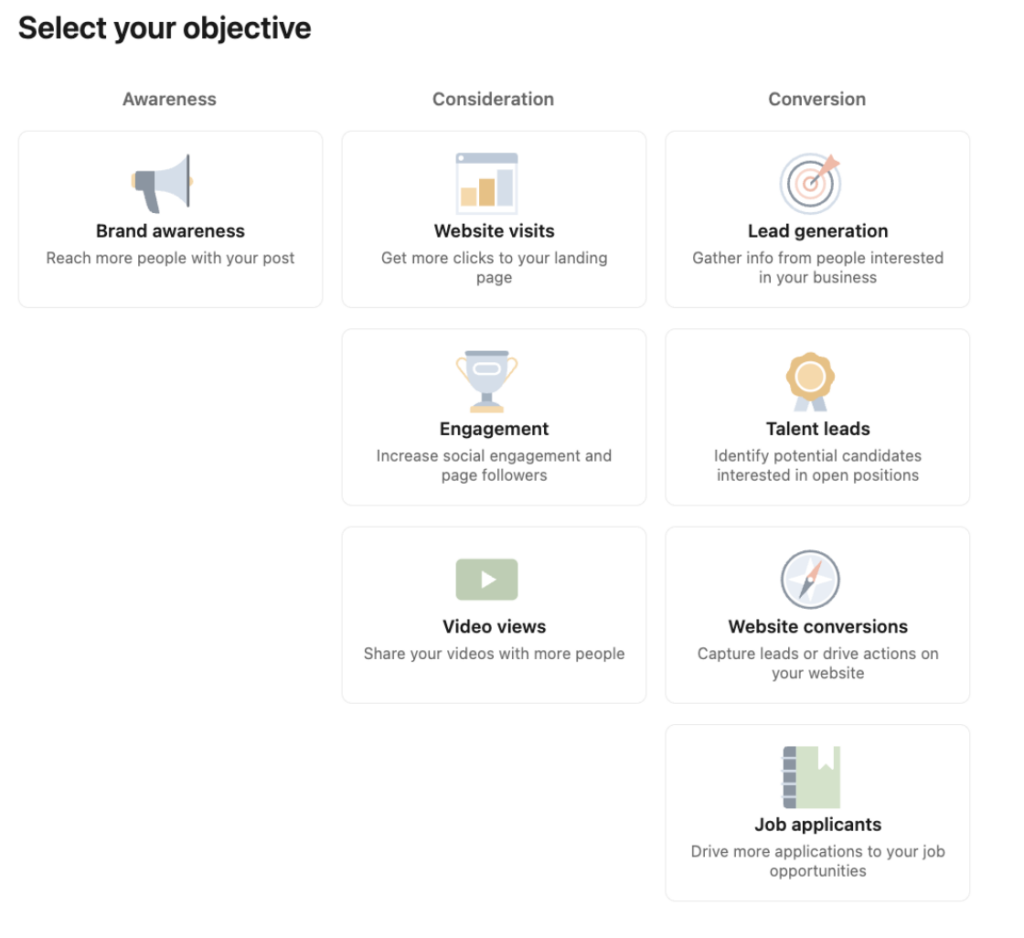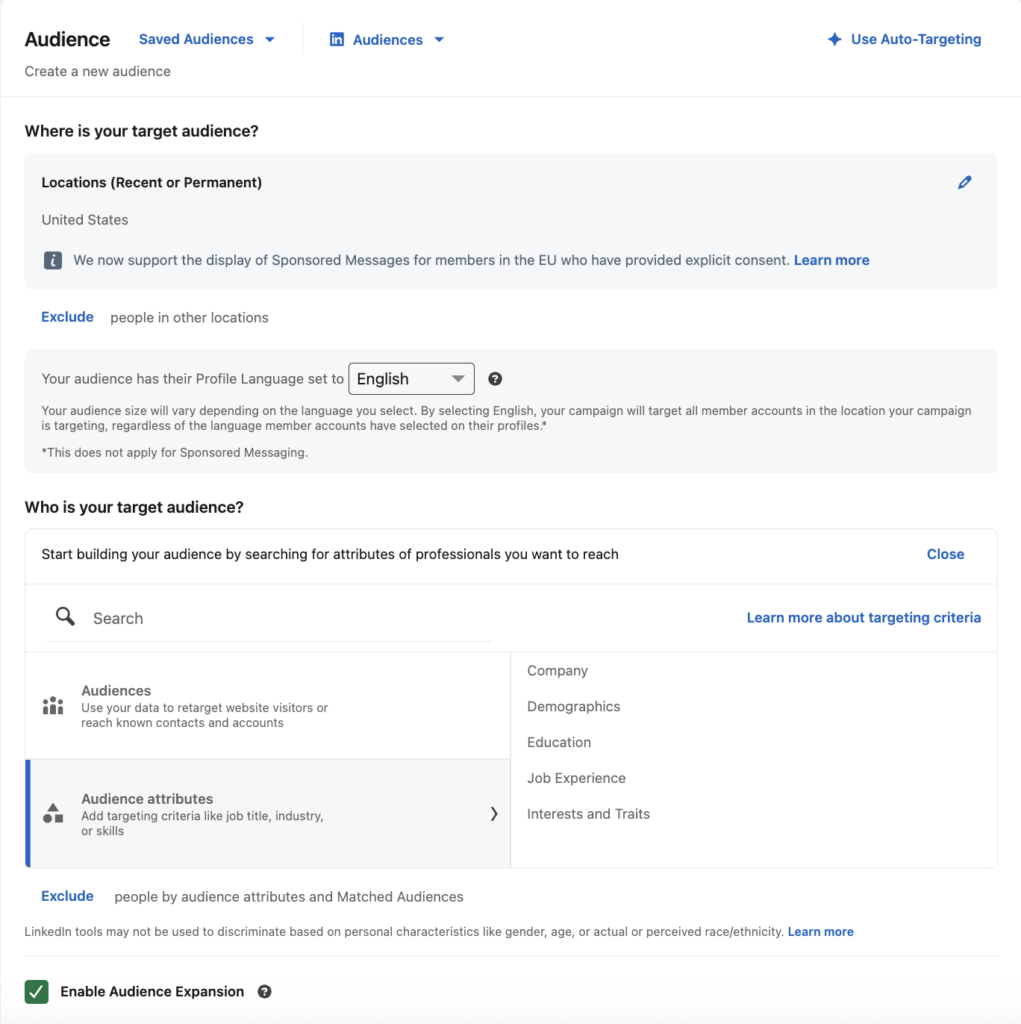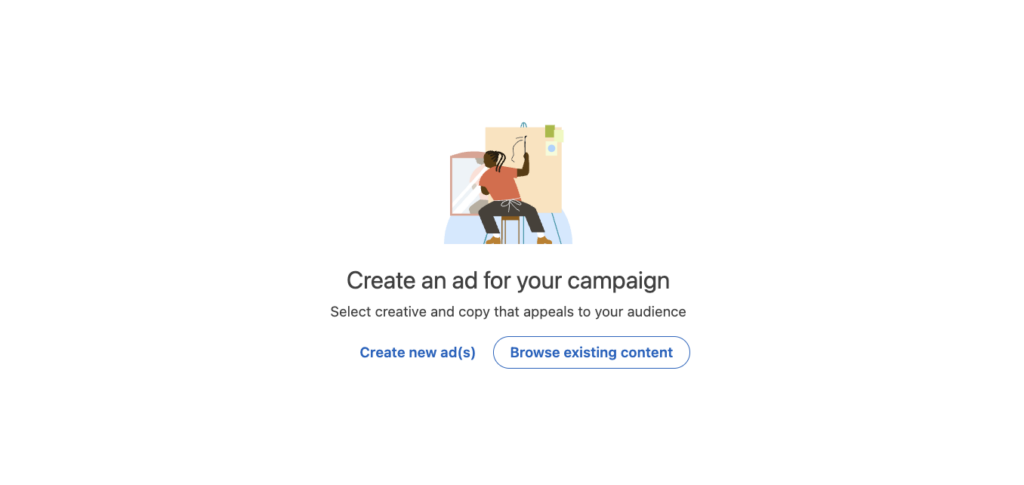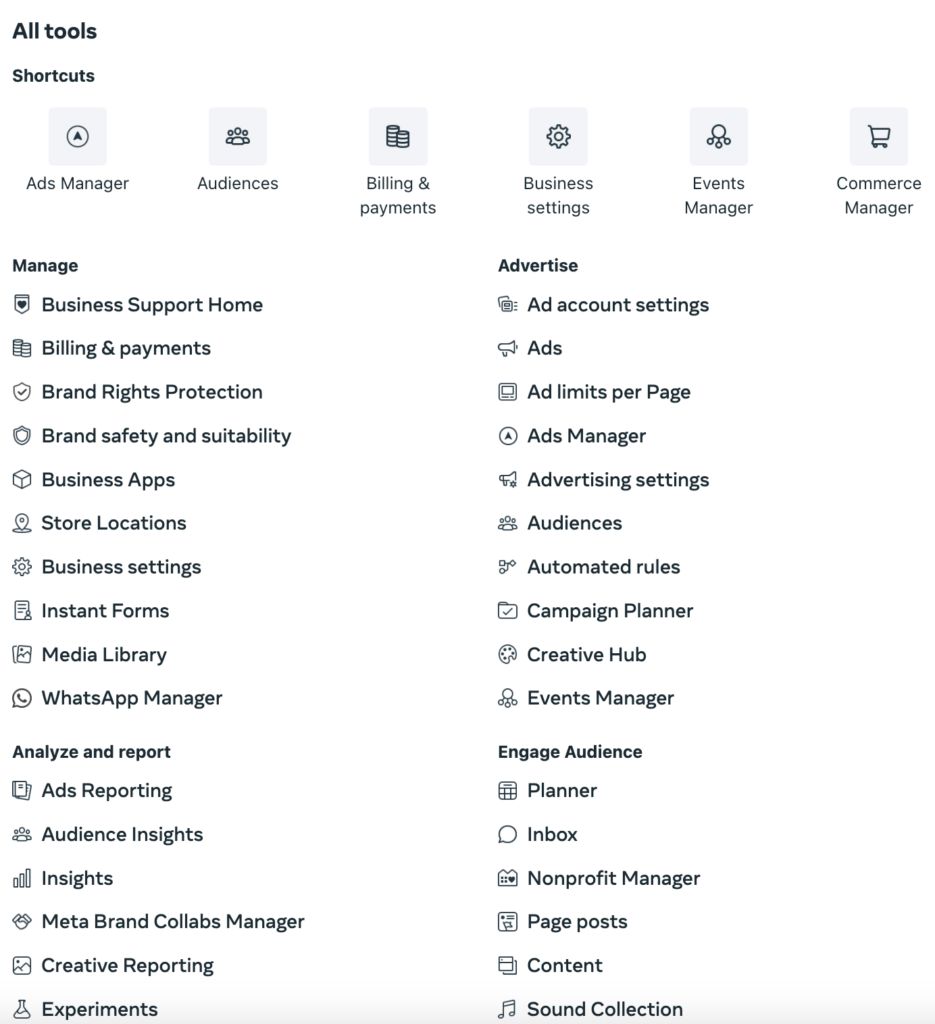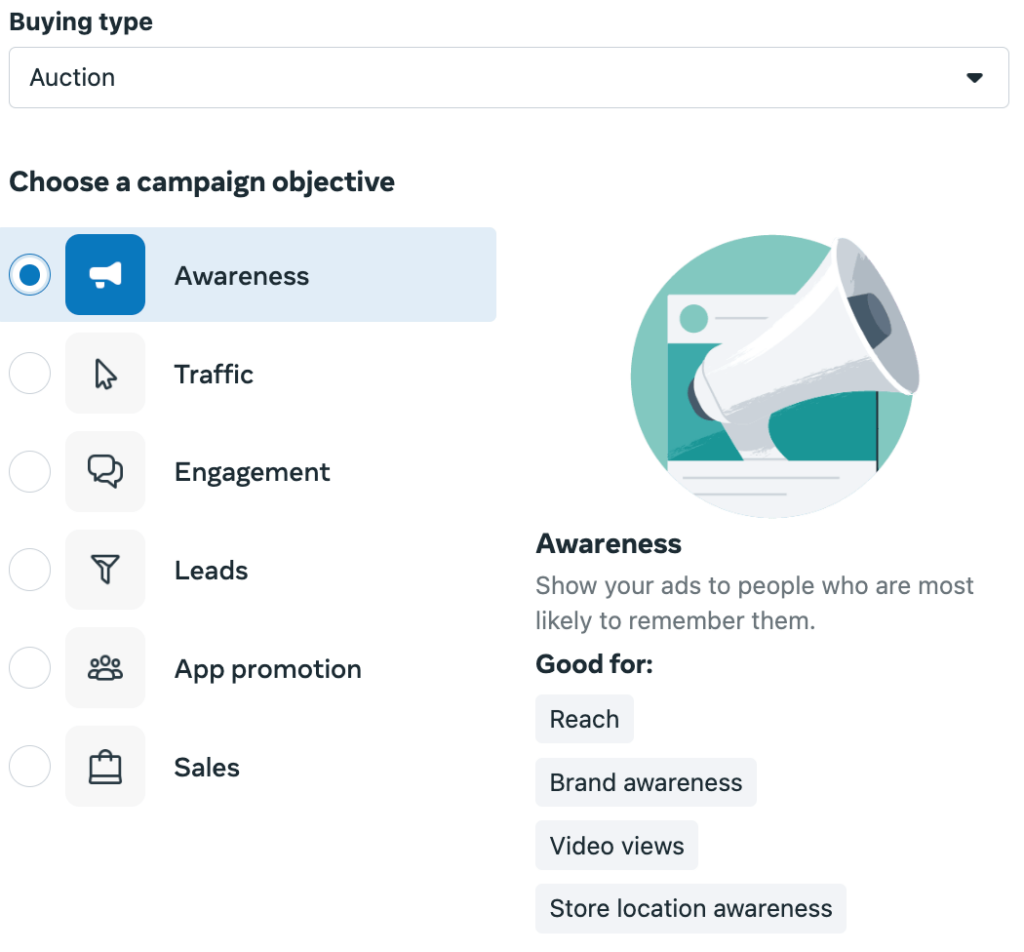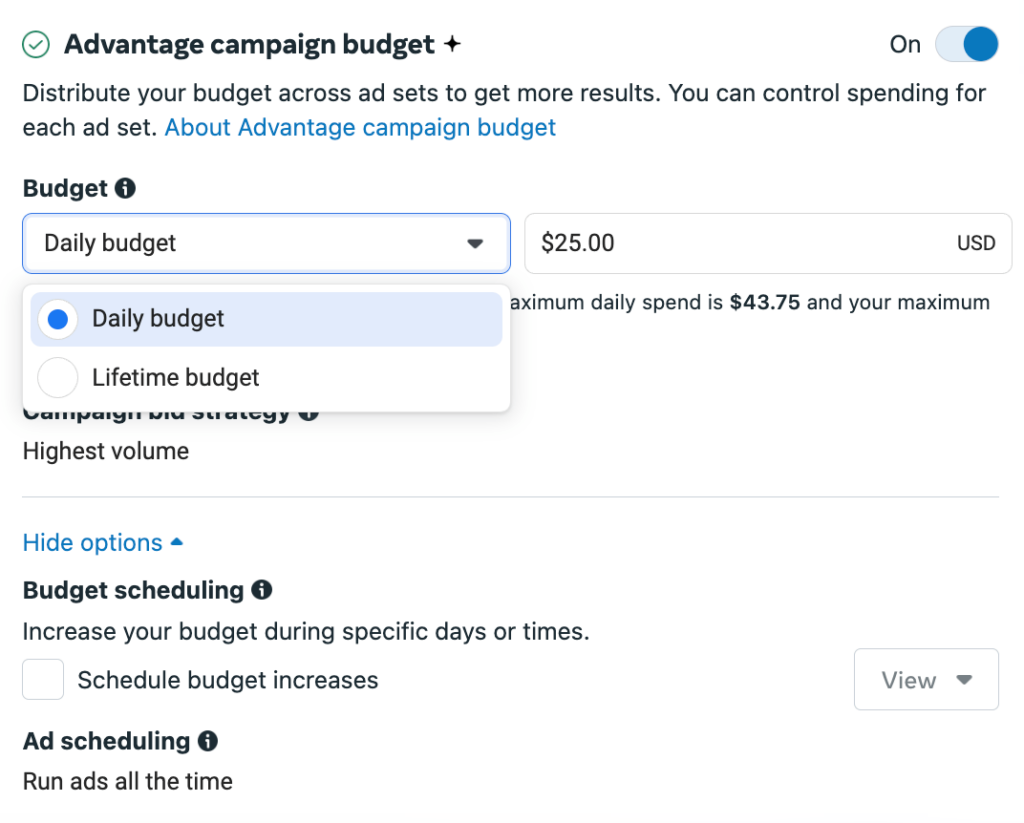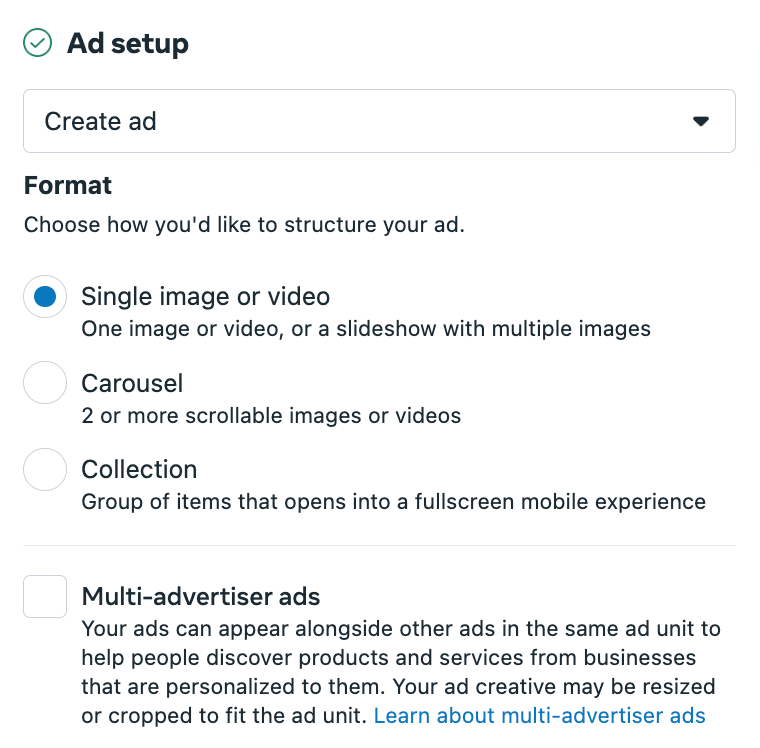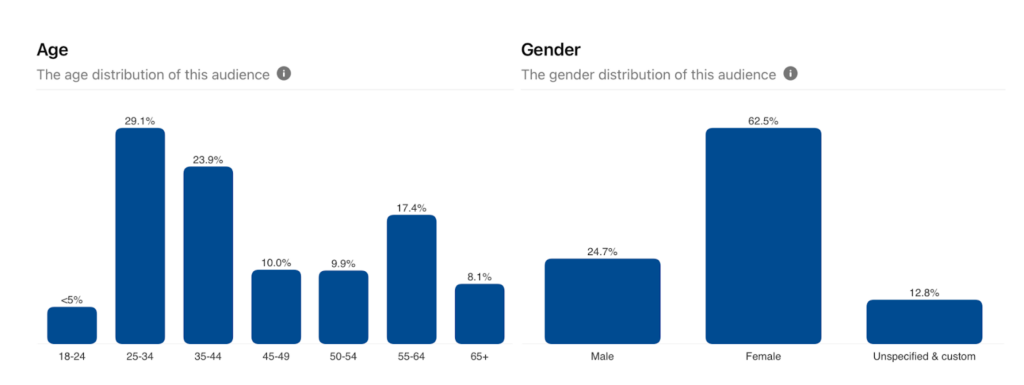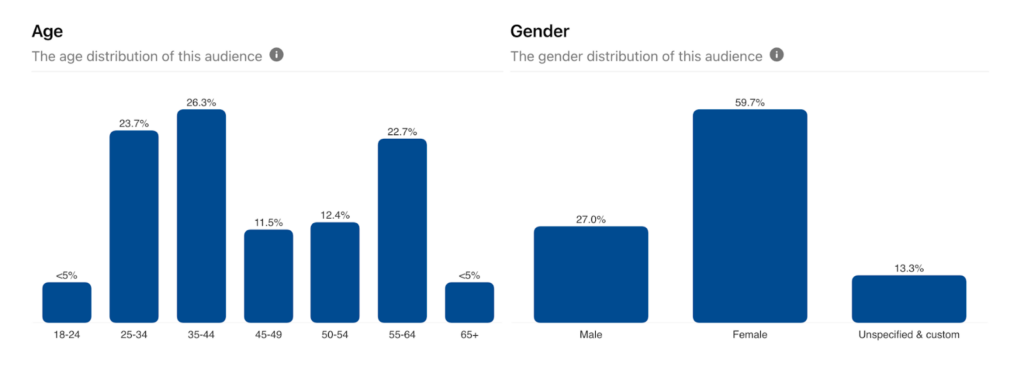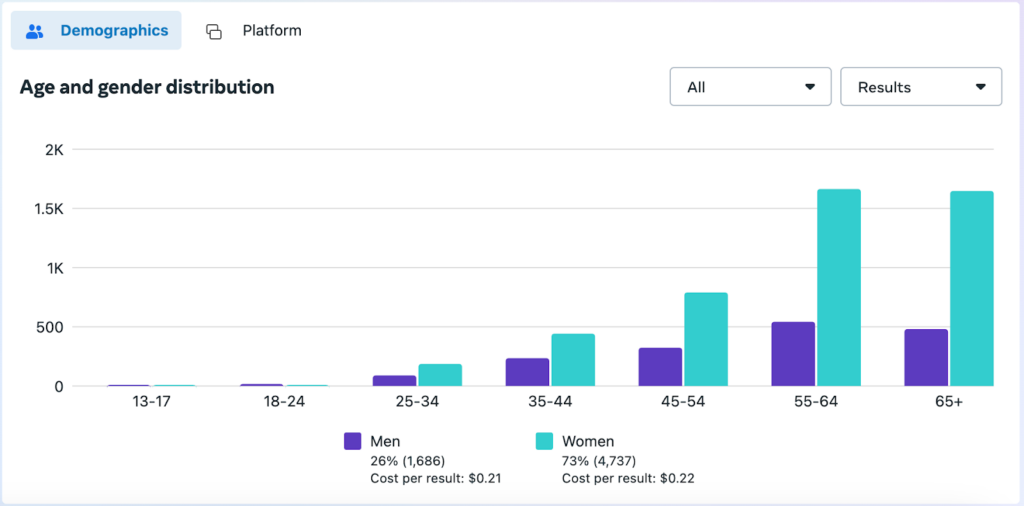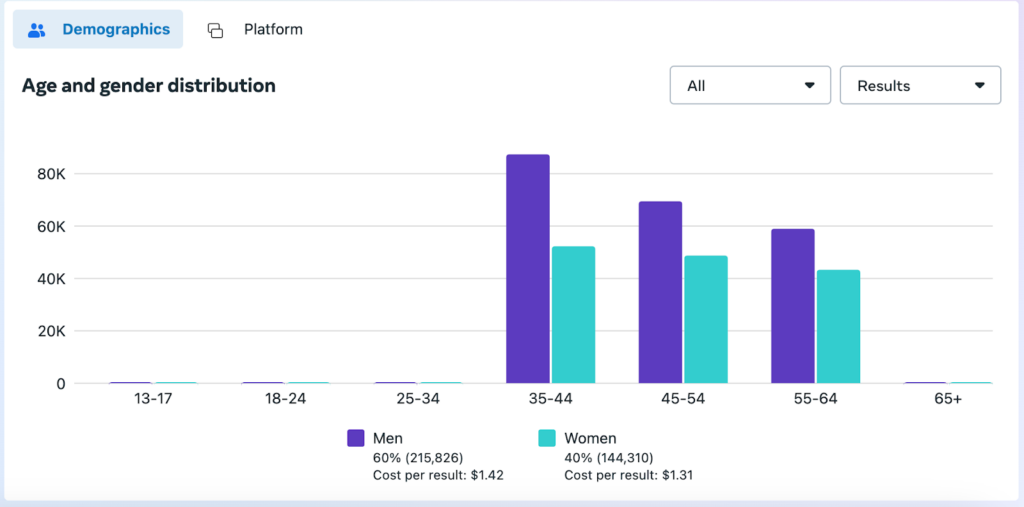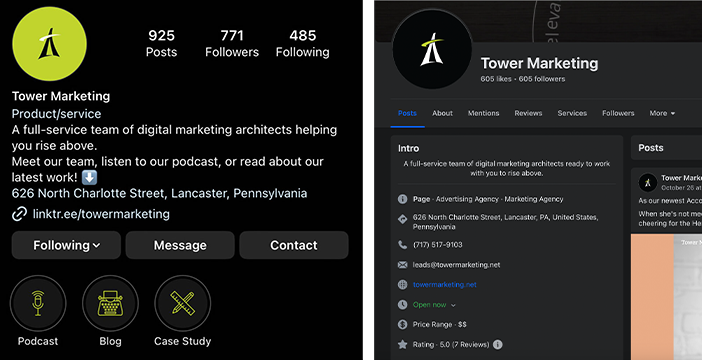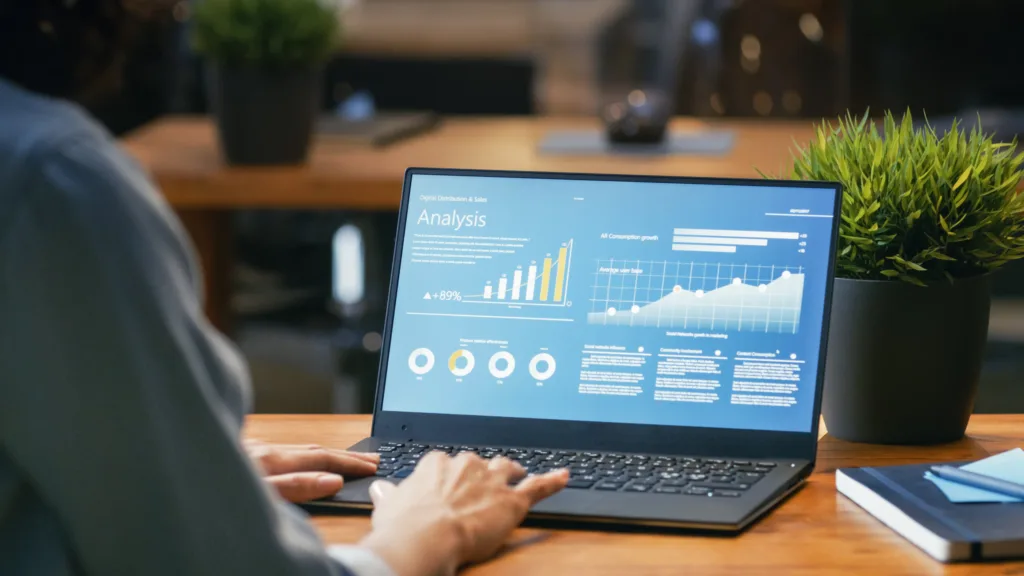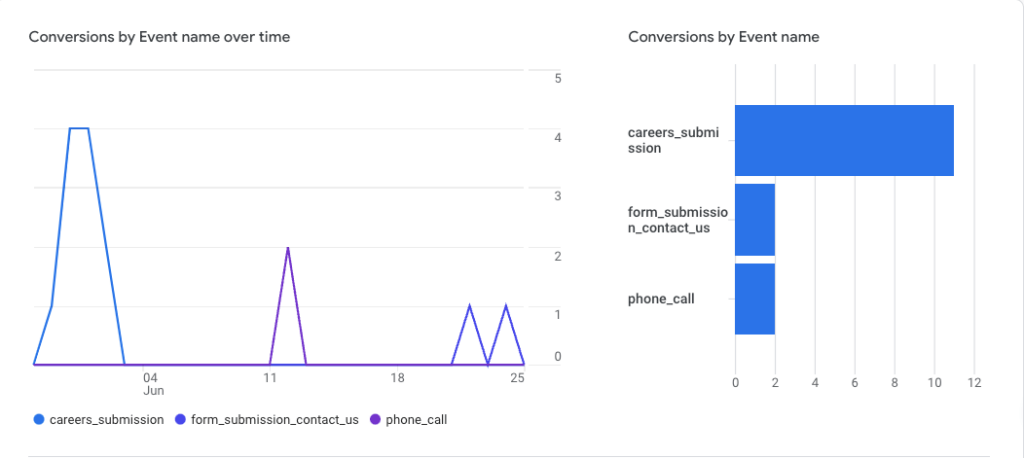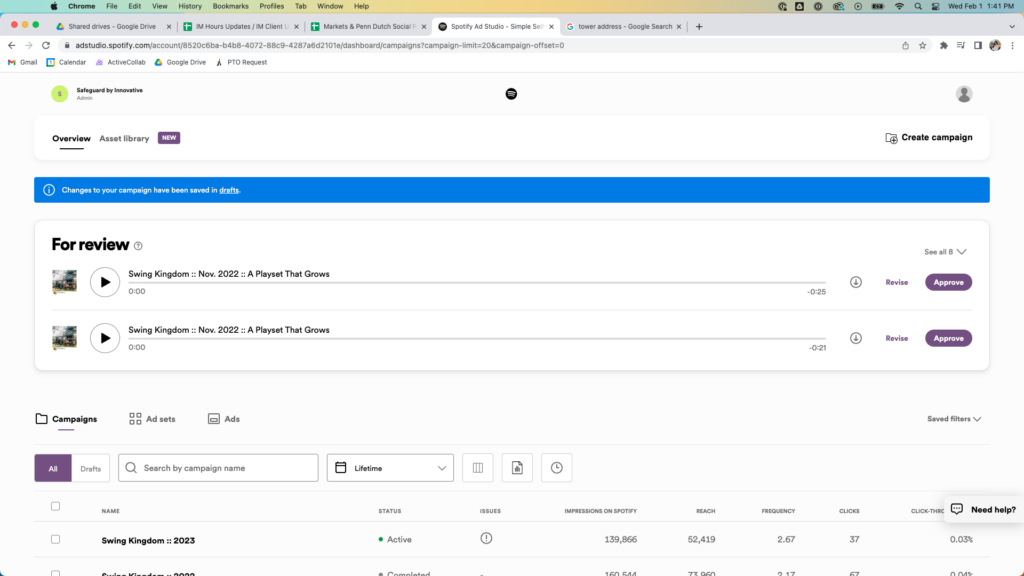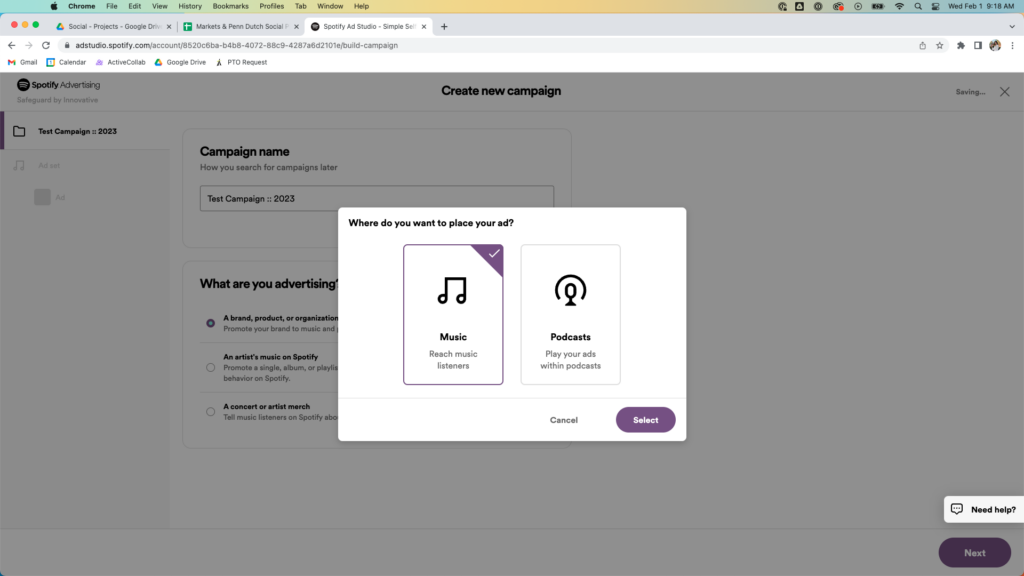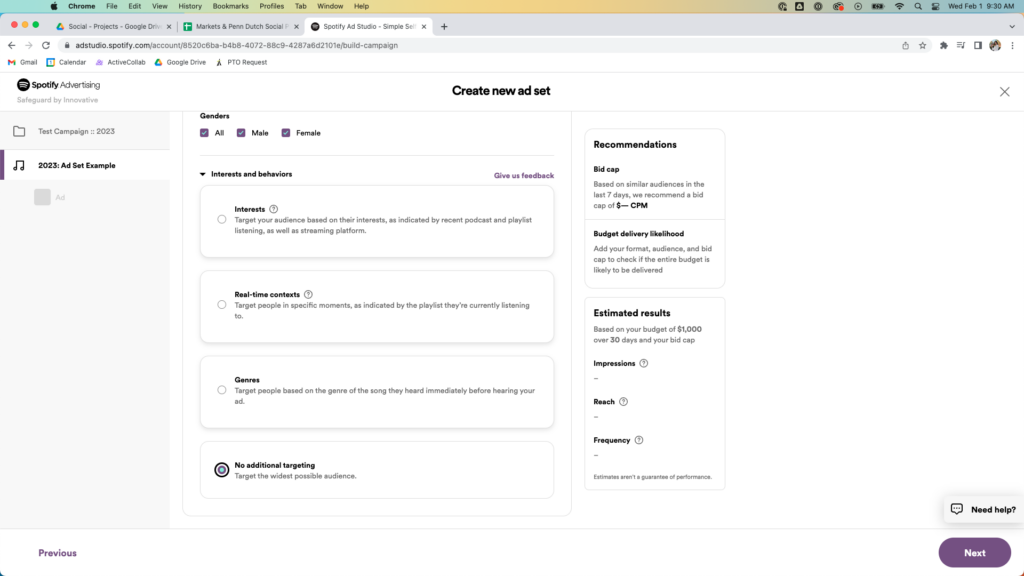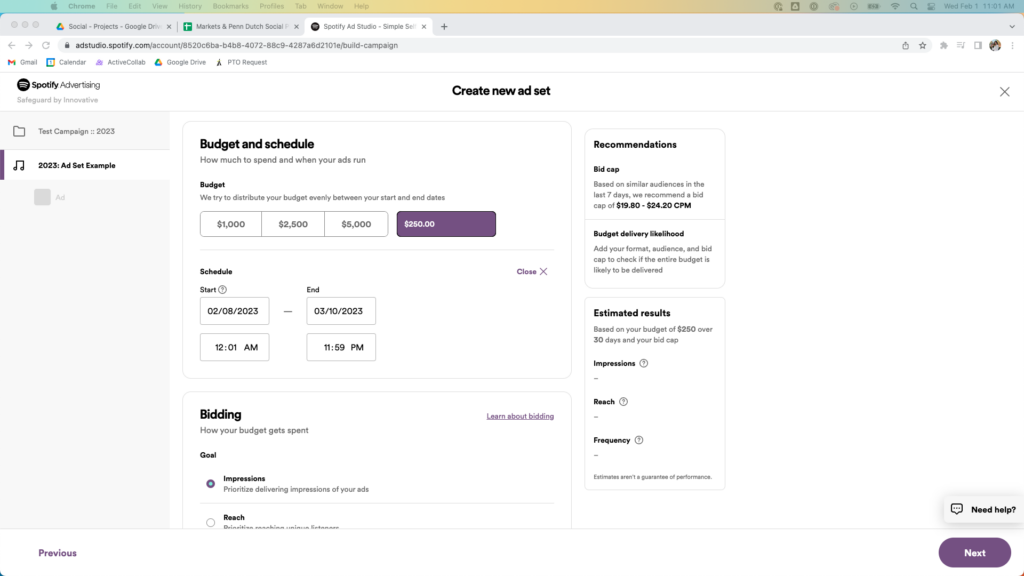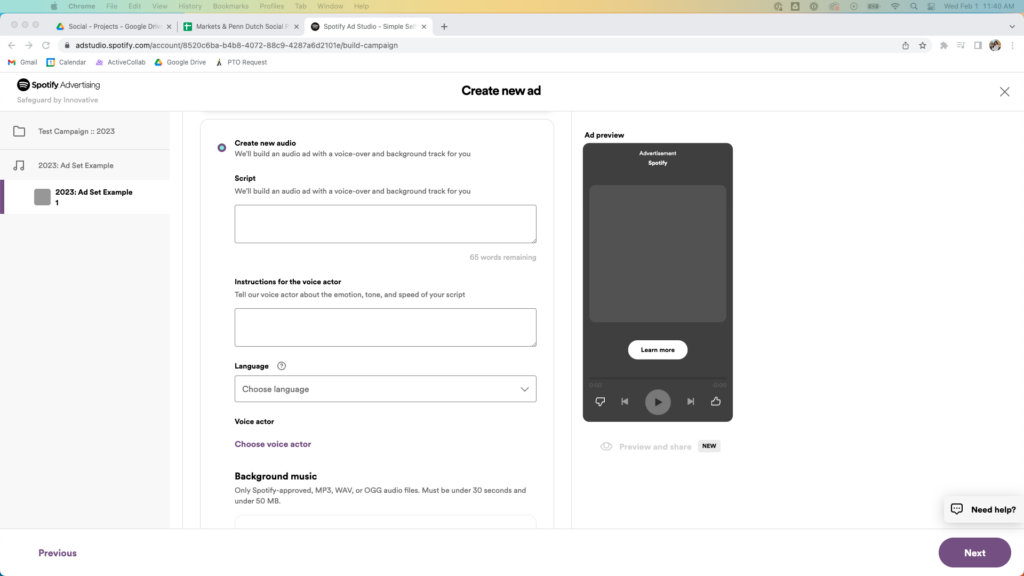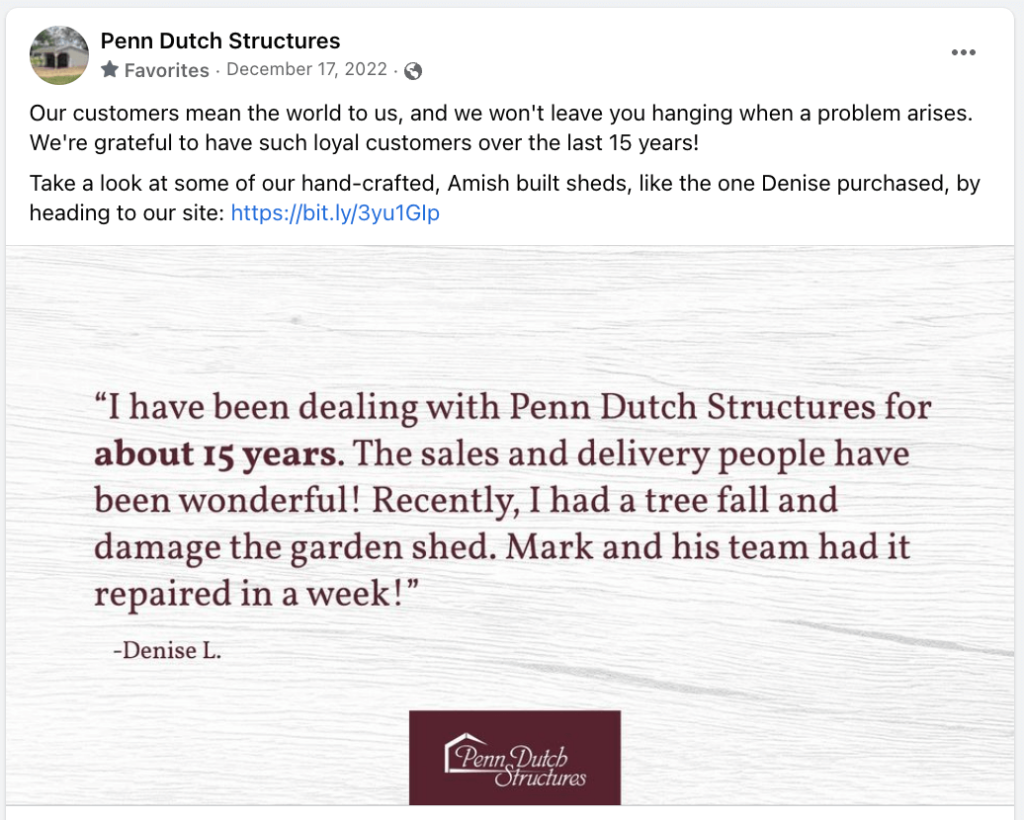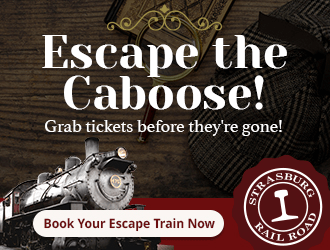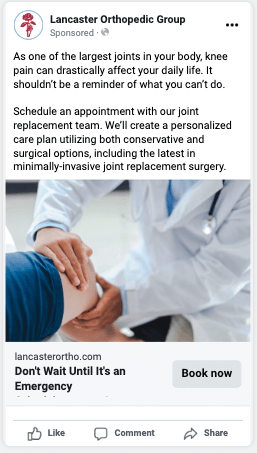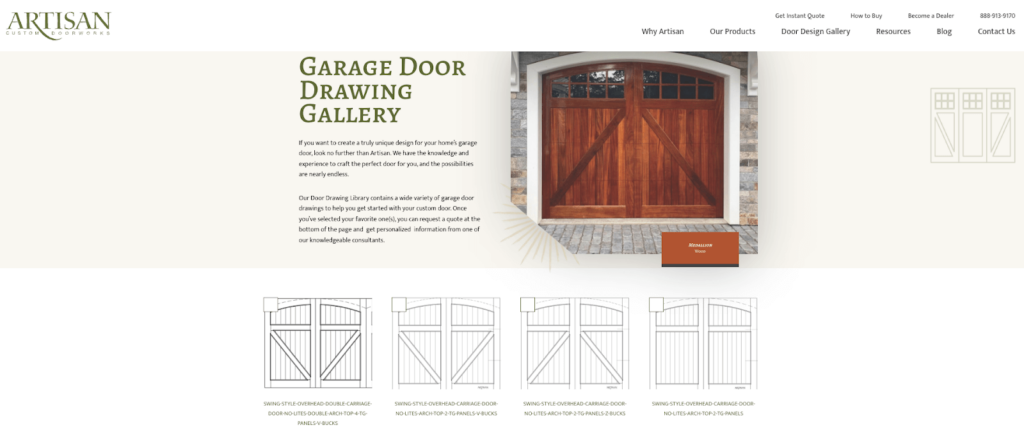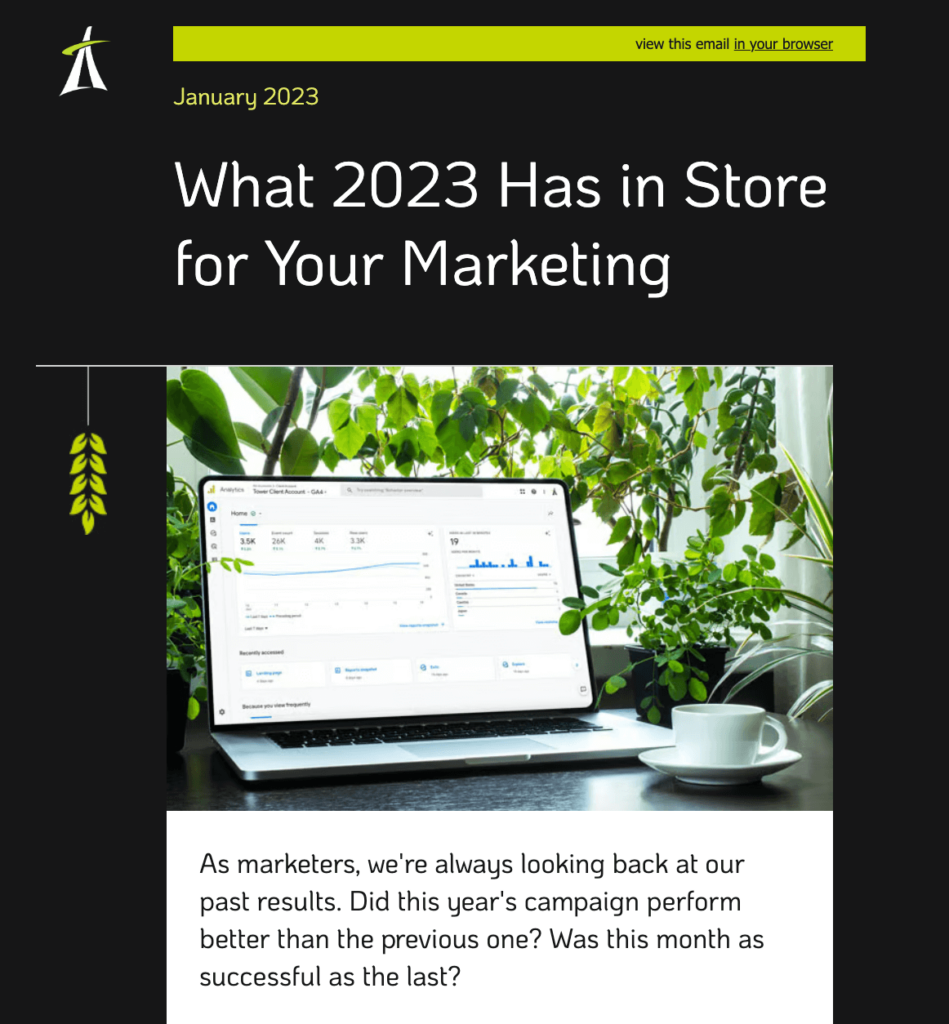Compelling visuals, clear goals, and defining your audience — all the SEO-optimized blog articles you’re finding on how to write Facebook ad copy can start to sound the same.
Instead of giving you a listicle of vague practices, I’m here to give you real advice based on real results so you can learn how to write effective Facebook ads that perform well for your business. I’ve worked with Facebook ads for years, and everything I’m sharing below is based on what we’ve observed at our agency from running different campaigns for all types of businesses.
And I’ll include lots of real examples of good Facebook ad copy from a mix of brands that are small to medium-sized organizations instead of referencing ads from publicly traded, renowned brands like Nike, Duolingo, or Spotify, etc. (all of whom have huge ad budgets and dedicated marketing teams).
That way you can see that even without those resources or bottomless ad budgets that large brand names have, there are still ways you can maximize your presence on Facebook and get good results from your ad copy.
How People Interact With Ads
Not all digital ads are the same. Even across social platforms, the ad delivery and intent of users is different. How you use Facebook ads in your campaign strategy needs to account for that.
Let’s compare the positioning of Facebook ads against a few other popular digital ads.
| Facebook/ Instagram Ads | Google Ads | Pinterest Ads |
| User Goal: On the platform to connect with their community. | User Goal: On the platform to search for a solution. | User Goal: On the platform to search for inspiration. |
| Ad Experience: Interrupts their journey. | Ad Experience: Provides an answer in their journey. | Ad Experience: Gives them an idea in their journey. |
Users on Pinterest searching for ideas closely mimic those in Google searching for solutions. They’re more willing to click. But on Facebook you have to catch attention first. Because you’re interrupting a user’s leisure time, the Facebook ad copy you create has to be compelling enough to tempt them to take the next step to buy, learn more, contact you, etc.
Facebook Ad Components
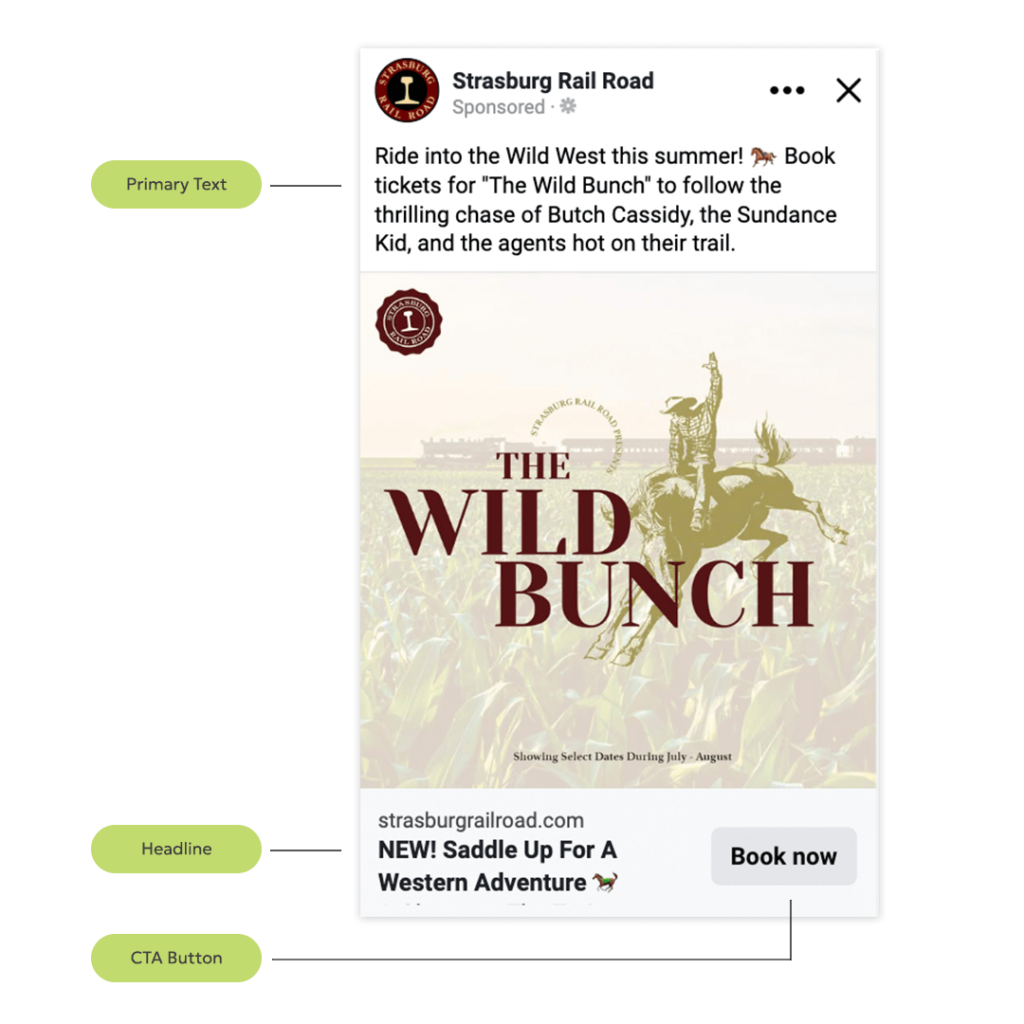
Facebook has lots of different ad placements (newsfeed, reels, marketplace, etc.) that will include or exclude parts of your copy, but here are the basic Facebook ad copy components you should always account for.
Now let’s get into 6 tips for writing Facebook ads that all businesses on the platform can use.
1. Keep It Simple & Don’t Overthink It.

The goal of your Facebook ad isn’t to tell your audience everything. It’s to catch their interest.
Think of your digital ads more like a poster. You just need enough to tempt them. Where you send viewers next is where you should have more details and use longer copy to persuade them.
The key to learning how to write effective Facebook ads copy is to reduce the work your audience has to do. As you create copy, consider how much work your audience will tolerate.
Examples of this in a Facebook ad include:
- Expanding the ad to view the long ad copy
- Swiping through carousel slides
- Calling or sending a message to learn more
- Linking out to a website page
- Watching a video (the length of it)
These tactics are all great to use depending on what you’re advertising. But keeping that 0.9-second window in mind, you need to be careful you don’t ask your audience to do too much.
Writing good Facebook ads requires you to look critically and cut. Reducing the amount of work your viewer needs to do means there’s a better chance they’ll take the next step you want them to.
This Facebook Ad Copy Tip In Action
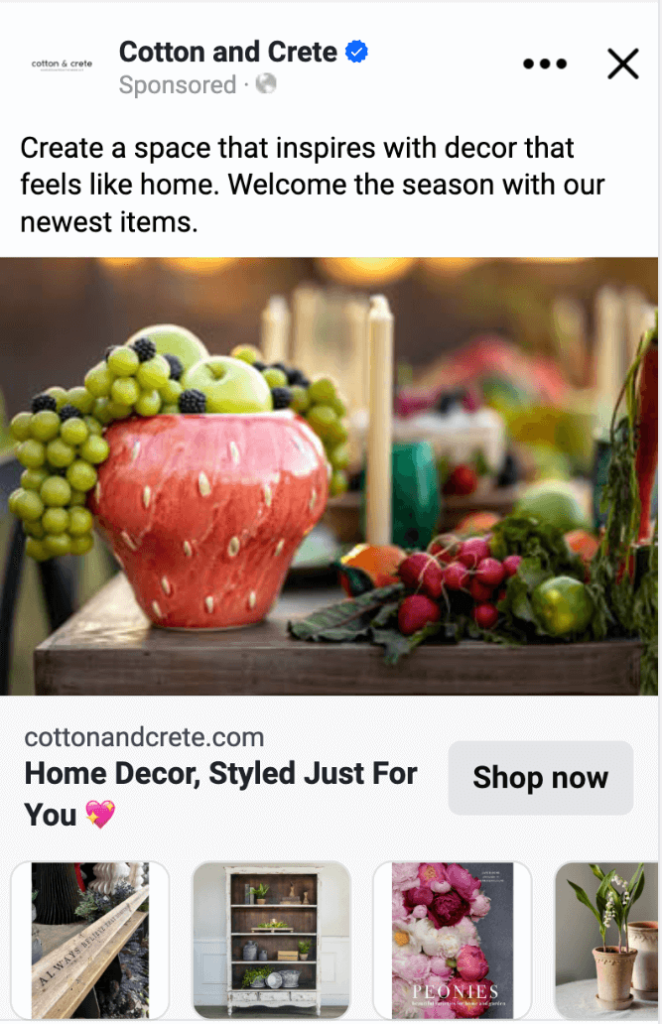
| Scenario: You have an e-commerce store selling household goods. |
| Your Facebook Ad: Is a short carousel ad showing different products, generated dynamically to show what’s of interest. |
| Where You Send Them: To the specific product on your site where users can see pricing, shipping costs, and other details that will persuade them to purchase. |
2. Speak Their Language.
Does your ad need to be creative, providing an emotional and storytelling experience, or utilitarian, proving the features and functional information?
The best way to choose is to consider your audience. And the message you’re trying to convey to them. Which of the two options will help you do that best? It’s best to choose the communication style your audience naturally uses.
Next make sure you also consult the Elements of Value Pyramid. Circle the needs your product or service is solving. Then make sure that regardless of how you position your ad (creative vs utilitarian), make sure your copy speaks to the key needs you identified. Doing so will make your ad resonate more with your audience.
This Facebook Ad Copy Tip In Action
There’s no right or wrong answer. In fact, we’d recommend trying both and measuring performance to determine which approach your audience likes better.

3. Find Your Own Brand Voice.
Think about different brands you admire for their marketing. (Nike, Apple, Chewy, Duo Lingo, etc.) Chances are, all of them have very clear brand voices that shine through in their advertising. You remember those companies because they have their own identity.
Now think about your brand. If you can only describe your voice as “professional” or “relationship-oriented,” you have some work to do. Those are the expectations of any good business, as that’s what keeps them around.
Instead, you need to figure out how “relationship-oriented” looks and sounds from your brand. And better define it. (Because, for example, Wendy’s version of relationship-oriented is very different from Chick-fil-A.)
Having a unique voice is only growing in importance. Consumers have more businesses to choose from and you have a short window to convince them to pick yours. Also, having your own brand voice will make you stand out from competitors using AI in ad content. Because if they’re all using AI, they’re getting similar outputs that sound generic.

Need help crafting your brand voice?
This Facebook Ad Copy Tip In Action
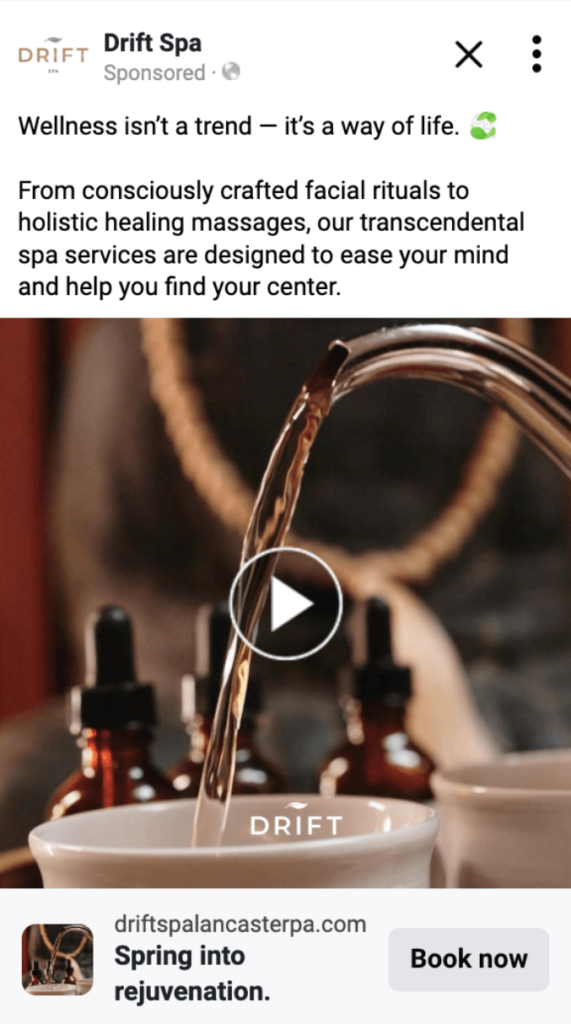
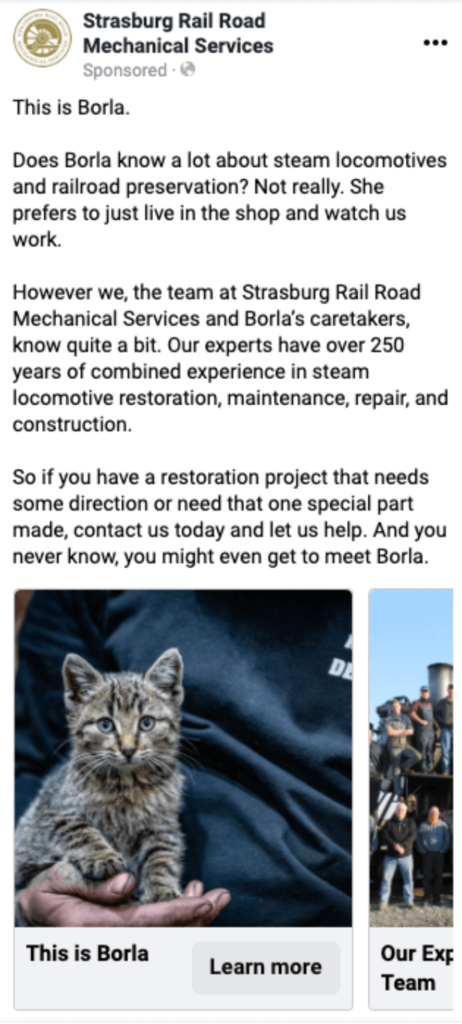

4. Looks Are Everything.
Visual content only continues growing in importance. Effective Facebook ad copy isn’t anything without effective visuals. Consider the way that phones have evolved to make it easier to capture photos and videos. And the rise of platforms like Instagram, Snapchat, TikTok, and more.
This doesn’t mean words are meaningless. You may hear people throw out the idea that “humans process visuals 60,000 times faster than text,” but this myth has actually been discredited. That said, a cheap or inauthentic looking visual will hurt your ad performance.
Your visual is what hooks someone first, so great copy can go unnoticed if you haven’t set up an appealing creative to complement it. Your ad creative also factors into the bidding system and determines your CPC and other key metrics
Our tips for visuals include:
- Using a mix of media (images, videos, reels, carousels, etc.)
- Trying visuals edited with branding vs. those without
- Leaning into lifestyle photography if it applies
- Investing in your own photography instead of using stock
- Matching your target audience in your creative (Eg., showing people 55+ in senior living facility ads)
- Showing the correct seasonal imagery (Eg., showing sheds in a fall landscape for a Facebook ad you’re running in October promoting sheds)
This Facebook Ad Copy Tip In Action
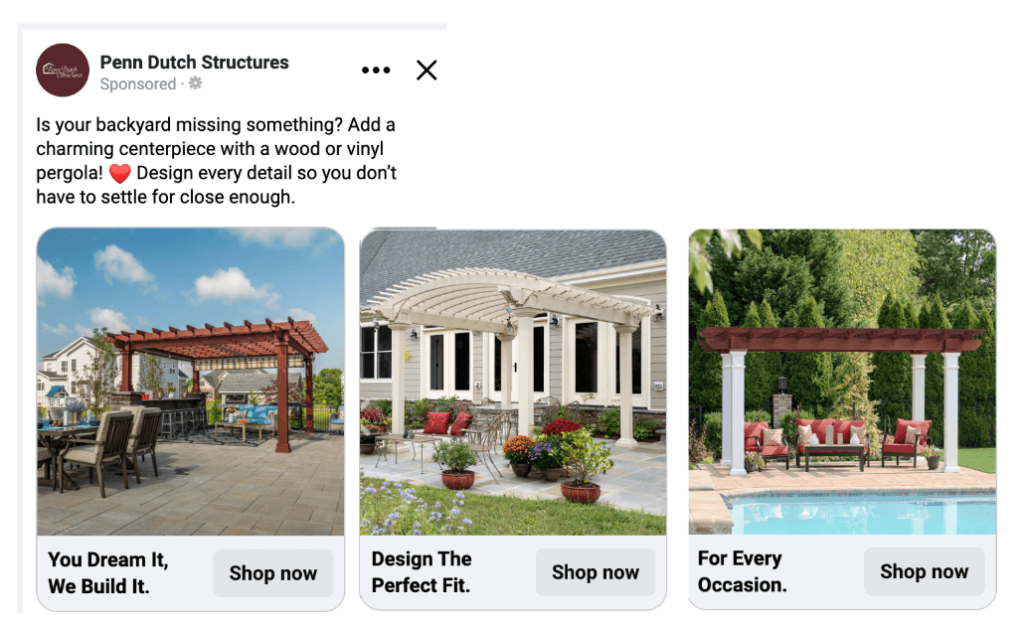
5. Don’t Guess. Test.
You are not your audience. And when we’re too close to our business, it’s hard to be objective. Instead of guessing, do testing.
Facebook A/B testing may not offer a scientifically sound result. But it still is a decent tool to figure out what’s working.
If you’re going to try it, follow this tutorial for using the A/B test tool. You can try testing by:
- Audience segments
- Creative and visuals
- Ad copy length
- Headlines
- Call to actions
- Ad placement
- Ad schedule
- Ad objectives
- Landing pages
- Selling features
This Facebook Ad Copy Tip In Action

6. Focus On Your Setup & Targeting.
Even if you figure out how to write effective ads for Facebook, the best copy in the world won’t make up for ineffective targeting. Ads Manager has lots of options you can use to optimize your ads, and what you choose will really vary on your industry, goals, and the setup of your website.
Because of that, the setup that works for you will be unique. Also, to truly optimize your ads it’s a must to install and use Datasets for your ad account. We’ve found success not just from having great ad creative, but also from having a strong setup in place and using the right features in Ads Manager.
Need help with your Facebook ad copy? We can help you maximize your technical setup, create engaging visuals, and monitor it all so you don’t have to.
